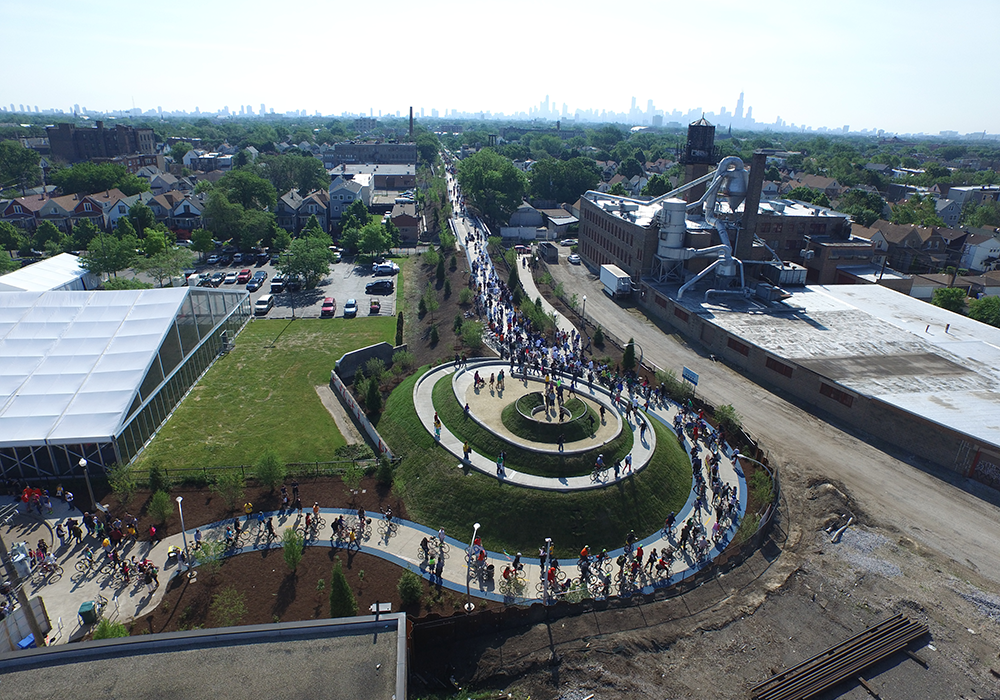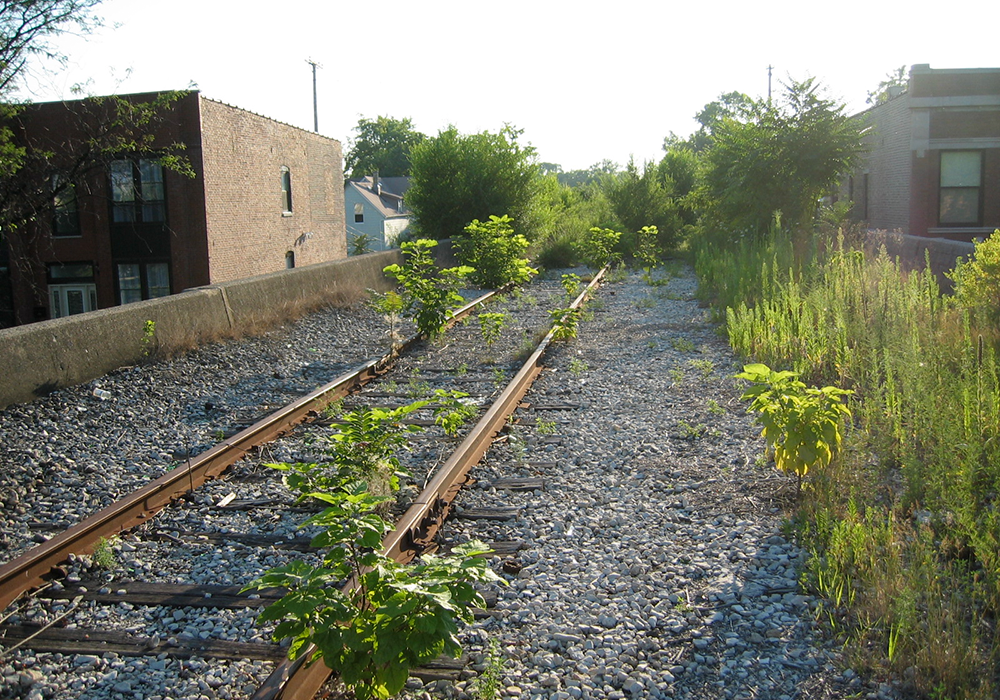Chicago, Illinois
The 606 – Taking Chicago’s Legacy of Great Parks to New Heights
2016 National Planning Excellence Award: Urban Design
Summary
An abandoned, elevated rail line is transformed into a park and trail system that serves 80,000 residents within a 10-minute walk, plus thousands of visitors. The 606 consists of the 2.7-mile Bloomingdale Trail as its centerpiece and a series of six planned ground-level parks.
Process
The 606 serves as a community connector for the Bucktown, Wicker Park, Logan Square, and Humboldt Park neighborhoods of Chicago. It is the longest elevated rails-trails conversion in the country, almost twice the length of New York's High Line.
The creation of The 606 was a long-term collaborative process that started when neighbors formed the Friends of the Bloomingdale Trail (FBT). They reached out to nonprofit land conservation agency The Trust for Public Land which became the lead private partner and helped bring a coalition of city and civic organizations together to move the project forward and assisted with land acquisition, planning, construction, and fundraising leadership. To complete the park, it took strong leadership from the City of Chicago and Chicago Park District, as well as support and input from dozens of community and grassroots partners and organizations.
The 606 fulfills recommendations from no fewer than five plans produced by the City of Chicago, Chicago Park District, Local Initiatives Support Coalition, and FBT.
The trail has added much-needed park and green space to the city, including more than 1,400 trees. It has helped reduce the 99-acre open space deficit that the Logan Square neighborhood had in the 1990s by providing roughly 24 acres of new park space. It provides a safe place for neighborhood children to learn to ride their bicycles without worrying about traffic, and is a new transportation corridor, providing a new way to commute to work. The 606 and its 17 access ramps are all in compliance with the Americans with Disabilities Act.

Aerial shot of The 606 on opening day with the Chicago skyline in the background.
Engagement
The CitySpace Plan of 1998 identified Logan Square as having the second-lowest amount of open space per capita of any neighborhood in Chicago. The city brought residents together to discuss strategies for adding more parks, resulting in the 2004 Logan Square Open Space Plan. The plan included a proposal to convert the Bloomingdale Line into a trail.
Civic engagement was and continues to be, a hallmark of The 606. Neighbors were actively involved in the planning of the park and trail system's design, function, and aesthetics, including access and safety. Community members were reached in person via public meetings or smaller gatherings with neighborhood groups and partner organizations such as block clubs and social service agencies. Transparency during the planning process made no topic off-limits, even if difficult or sensitive. This level of engagement has not wavered, and continues today, even with the park and trail system open and operational.
A testament to the community engagement was that an estimated 50,000 people participated in the opening day celebration on June 6, 2015.

Access plan for The 606.
Results
The 606 brings together arts, history, design, trails, event spaces, alternative transportation venues, and green space. Chicago Magazine named The 606 the Best New Public Art of 2015 and said "The 606 shows how to design a park in the 21st Century — and beyond." Architecture critic Blair Kamin called The 606 a "bold and potentially brilliant reinvention of a dormant and derelict elevated freight line that blighted Northwest Side neighborhoods such as Bucktown and Logan Square."
Partnerships
Planning projects of this magnitude are possible because of the many contributions of many consultants and individuals on design teams. The phase II final design was led by Collins Engineers; Michael Van Valkenburgh Associates; and Frances Whitehead. Phase I preliminary design and engineering was led by Arup; Ross Barney Architects; Michael Van Valkenburgh Associates; and the Chicago Public Art Group.

The 606 before.


